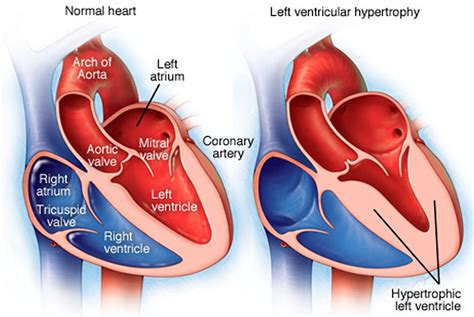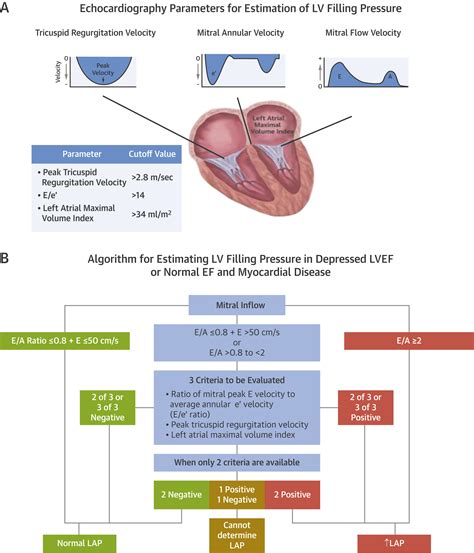lv due | Left ventricular hypertrophy lv due Things that increase the risk of left ventricular hypertrophy include: 1. Age.Left ventricular hypertrophy is more common in older people. So is . See more Find support for your Canon LV-X300ST. Browse the recommended drivers, downloads, and manuals to make sure your product contains the most up-to-date software.
0 · What is Left Ventricular Hypertrophy (LVH)?
1 · Mayo Clinic Minute: Left ventricular failure
2 · Left ventricular hypertrophy
3 · Left Ventricle Diastolic Dysfunction and Prognosis
Canon LV-S1 Projector User Manual. Open as PDF. of 44. English. Multimedia Projector. Owner’s Manual. L V -S1. next. Office Manuals and free pdf instructions. Find the office and computer equipment manual you need at ManualsOnline.
Left ventricular hypertrophy is thickening of the walls of the lower left heart chamber. The lower left heart chamber is called the left ventricle. The left ventricle is the heart's main pumping chamber. During left ventricular hypertrophy, the thickened heart wall can become stiff. Blood pressure in the heart . See more
? .jpg)
Left ventricular hypertrophy usually develops gradually. Some people do not have symptoms, especially during the early stages of the condition. Left ventricular hypertrophy itself doesn't cause symptoms. But symptoms may occur as the strain on the . See moreAnything that puts stress on the heart's lower left chamber can cause left ventricular hypertrophy. The lower left chamber is called the . See moreLeft ventricular hypertrophy changes the structure of the heart and how the heart works. The thickened left ventricle becomes weak and stiff. This prevents the lower left heart . See moreThings that increase the risk of left ventricular hypertrophy include: 1. Age.Left ventricular hypertrophy is more common in older people. So is . See more
Left ventricular dysfunction can be a silent and potentially deadly condition. "What's terribly important is it can be there without symptoms and can lead to bad things happening: . To provide for tissue perfusion without pulmonary congestion, the left ventricle (LV) must eject an adequate stroke volume at arterial pressure (systolic function) and fill without .
Left ventricular hypertrophy, or LVH, is a term for a heart’s left pumping chamber that has thickened and may not be pumping efficiently. Sometimes problems such as aortic . Left ventricular hypertrophy changes the structure of the heart and how the heart works. The thickened left ventricle becomes weak and stiff. This prevents the lower left heart chamber from filling properly with blood.
Left ventricular dysfunction can be a silent and potentially deadly condition. "What's terribly important is it can be there without symptoms and can lead to bad things happening: death, shortness of breath, fainting hospitalization."
To provide for tissue perfusion without pulmonary congestion, the left ventricle (LV) must eject an adequate stroke volume at arterial pressure (systolic function) and fill without requiring an abnormally increased left atrial pressure (diastolic function). Left ventricular hypertrophy, or LVH, is a term for a heart’s left pumping chamber that has thickened and may not be pumping efficiently. Sometimes problems such as aortic stenosis or high blood pressure overwork the heart muscle. Left ventricular diastolic dysfunction (LVDD) is a condition that affects your heart’s ability to fill up with blood before sending the blood out into your circulation.
Diastolic dysfunction is a problem with diastole, the first part of your heartbeat. Typically, your lower heart chambers relax and fill with blood during diastole. Diastolic dysfunction occurs when your lower heart chambers don’t relax as they should. Over time, the dysfunction can lead to diastolic heart failure. To diagnose left ventricular hypertrophy, a healthcare professional does a physical exam and asks questions about your symptoms and family's health history. The care professional checks your blood pressure and listens to your heart with a device called a stethoscope. Assessment of left ventricular (LV) diastolic function is an essential component of the comprehensive evaluation of cardiac function by echocardiography. Several indices have been examined over the years, spanning simple to complex measurements. Left ventricular hypertrophy (LVH) is a condition in which there is an increase in left ventricular mass, either due to an increase in wall thickness or due to left ventricular cavity enlargement, or both.
173 talking about this Left ventricular hypertrophy changes the structure of the heart and how the heart works. The thickened left ventricle becomes weak and stiff. This prevents the lower left heart chamber from filling properly with blood. Left ventricular dysfunction can be a silent and potentially deadly condition. "What's terribly important is it can be there without symptoms and can lead to bad things happening: death, shortness of breath, fainting hospitalization." To provide for tissue perfusion without pulmonary congestion, the left ventricle (LV) must eject an adequate stroke volume at arterial pressure (systolic function) and fill without requiring an abnormally increased left atrial pressure (diastolic function).
Left ventricular hypertrophy, or LVH, is a term for a heart’s left pumping chamber that has thickened and may not be pumping efficiently. Sometimes problems such as aortic stenosis or high blood pressure overwork the heart muscle. Left ventricular diastolic dysfunction (LVDD) is a condition that affects your heart’s ability to fill up with blood before sending the blood out into your circulation.
Diastolic dysfunction is a problem with diastole, the first part of your heartbeat. Typically, your lower heart chambers relax and fill with blood during diastole. Diastolic dysfunction occurs when your lower heart chambers don’t relax as they should. Over time, the dysfunction can lead to diastolic heart failure. To diagnose left ventricular hypertrophy, a healthcare professional does a physical exam and asks questions about your symptoms and family's health history. The care professional checks your blood pressure and listens to your heart with a device called a stethoscope. Assessment of left ventricular (LV) diastolic function is an essential component of the comprehensive evaluation of cardiac function by echocardiography. Several indices have been examined over the years, spanning simple to complex measurements. Left ventricular hypertrophy (LVH) is a condition in which there is an increase in left ventricular mass, either due to an increase in wall thickness or due to left ventricular cavity enlargement, or both.

What is Left Ventricular Hypertrophy (LVH)?

bases dior diferenças

Find support for your Canon LV-S4. Browse the recommended drivers, downloads, and manuals to make sure your product contains the most up-to-date software.
lv due|Left ventricular hypertrophy


























